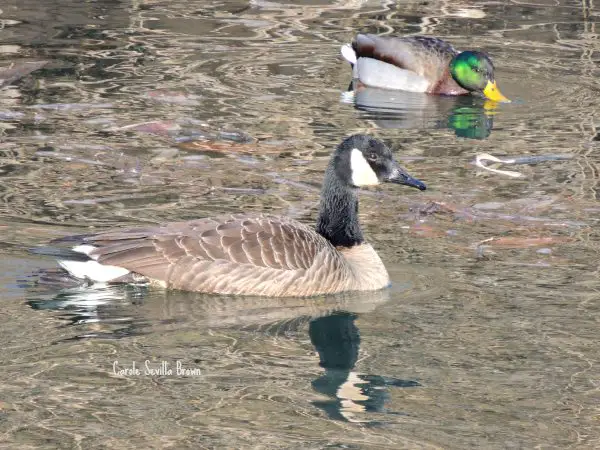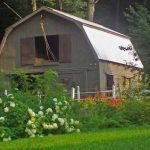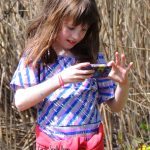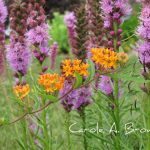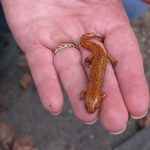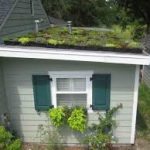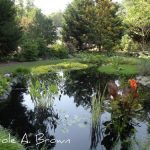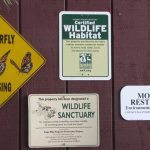I really like to begin each new year the way I want the rest of the year to happen. So I always make sure I have cash in my pockets, make my wildlife garden resolutions (plans for what I want to add this year), and head outdoors to welcome the start of the New Year in nature.
This year we packed up our Plott Hounds and headed to our favorite local nature patch, the John Heinz National Wildlife Refuge.
Just last week I was lamenting how few ducks were at one of my favorite winter duck watching spots, the Cambridge, MD waterfront. There were fewer winter ducks than we expected because this winter has been much milder than last year, and the ducks were able to remain further north because their watery feeding spots hadn’t frozen over yet.
Same thing at nearby Blackwater National Wildlife, not many ducks, fewer than expected Snow Geese, but lots of Bald Eagles fishing in the marsh.
What a difference a week makes!

Ring-billed Gull on Ice
The temperature has dropped significantly and now the impoundment at Heinz NWR has frozen over. About 20 Ring-billed Gulls forlornly stood on the frozen ice as if to say “Hey, what happened?”
I did enjoy the sparkle and patterns created by the ice, though:
And the glint of the muted sun off the frozen impoundment
But, knowing that freezing won’t kill off the invasive Garlic Mustard, still enjoyed its frilly parsley-like leaves “floating” in the ice:
Winter is a really good time to take note of invasive plants because unless it’s a native evergreen, NOTHING native is green at this time of year!
These may be pretty looking seed capsules, but they belong to the invasive Paulownia Tree. Each of those seed capsules spews thousands of seeds out into the air, and they float away in the wind, or travel downstream and outcompete native forest trees and take over natural habitats.
Take a good look at how many capsules are hanging from this tree. We’ve got the Darby Creek on one side and the refuge impoundment on the other side. And thousands of invasive trees just laying in wait ![]()
And while these berries have a gorgeous splash of color in an otherwise drab landscape, they belong to the invasive Oriental Bittersweet, another ecological thug.
Just goes to show that just because you’re out in nature, doesn’t mean it’s “natural” due to the hard work of the most invasive species of all–the humans.
Philadelphia Skyline from John Heinz National Wildlife Refuge
John Heinz National Wildlife Refuge lies at the southwest tip of Philadelphia, just across from the Philadelphia Airport, and along the infamous 95 corridor, and it is this proximity to such a large urban area that makes this refuge unique.
Signs of human activity abound in the refuge, like this abandoned oil drum
And this proximity also accounts for the proliferation of so many invasive plants. Much of the impoundment area used to be a trash dump prior to becoming a protected area. It’s always a surprise to see a lone daffodil showing up in the spring.
Continuous construction along I 95, and ongoing development at the airport are significant areas of concern for management of the refuge.
But beauty abounds as well!
I always wondered which tree it was that was able to hold onto its leaves through the winter, but I got this question answered by my cousin Brenda Clements Jones in her post about the ghostly Beech tree over at Beautiful Wildlife Garden.
I was especially struck by the beautiful texture and patterns in some downed tree stumps, so I wrote about what a great benefit dead and decaying wood is for wildlife in your garden.
But most importantly, I began the new year outdoors, with the sun on my face, enjoying the beauty of the nature around me!
Learn more about John Heinz National Wildlife Refuge:
More of my visits to John Heinz National Wildlife Refuge:
- Urban Wildlife Habitat at John Heinz National Wildlife Refuge
- Very Late first Monarch of the Season
- Wildlife Gardens Expand Urban Wildlife Corridors
- A Visit to John Heinz National Wildlife Refuge
- Kids and Nature Enliven Your Life
- Early Spring Critters at John Heinz NWR
- Birding and (not) Beaver
- Winter Ducks and Early Spring Migrant Birds
More From Ecosystem Gardening:
Submit your review | |

